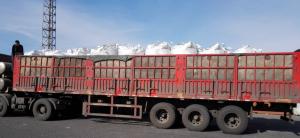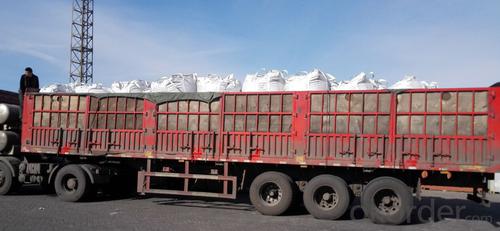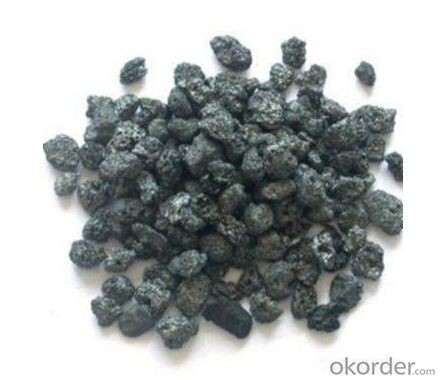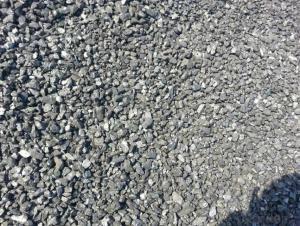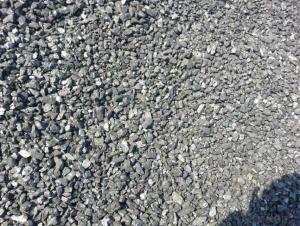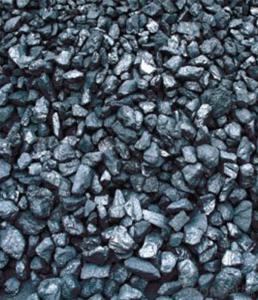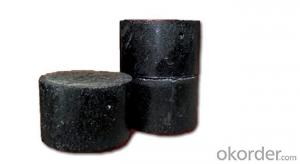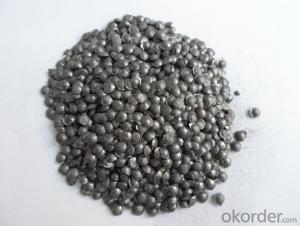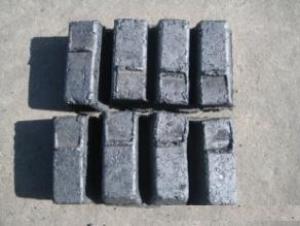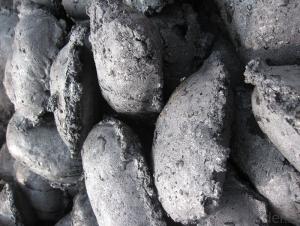CPC Powder High FC Carbon Low Sulfur Low Ash
- Loading Port:
- Tianjin
- Payment Terms:
- TT or LC
- Min Order Qty:
- 20 m.t.
- Supply Capability:
- 1500 m.t./month
OKorder Service Pledge
OKorder Financial Service
You Might Also Like
Packaging & Delivery
| Packaging Detail: | 50kg/bag 100kg/bag 1000kg/bag Or according with client need to do |
| Delivery Detail: | 2 weeks |
Specifications
CPC Powder High FC Carbon Low Sulfur Low Ash
Petroleum coke products can be divided into needle coke, sponge coke, projectile coke and coke breeze four kinds.
Calcined Petroleum Coke
F.C.: 98.5%MIN
ASH: 0.8% MAX
V.M.: 0.7%MAX
S:0.5%MAX
Moisture: 0.5%MAX
Structure
CPC Powder High FC Carbon Low Sulfur Low Ash
Shape: granule
· Dimensions: 0-1mm, 1-5mm, 1-6mm, 2-8mm, etc
· Product Type: Carbon Additive
· C Content (%): 98-99.5% MIN
· Working Temperature: -
· S Content (%): 0.5%-0.7%MAX
· Ash Content (%): 0.7%MAX
· Volatile:0.8%MAX
· Moisture: 0.5% MAX
· ADVANTAGE: low ash & sulfur
· COLOR: Black
Feature
CPC Powder High FC Carbon Low Sulfur Low Ash
Physics and chemistry performance:
Unit | Index | |||||
No.1 | No.2 | No.3 | ||||
Density | g/cm3 | 2.04 | 2.00 | 2.00 | ||
sulphur content | %≤ | 0.5 | 1.0 | 2.5 | ||
volatility | %≤ | 0.5 | 0.5 | 0.5 | ||
ash content | %≤ | 0.5 | 0.5 | 0.5 | ||
moisture | %≤ | 0.3 | 0.5 | 0.5 | ||
charcoal | %≤ | 98.5 | 98.0 | 98.0 | ||
Image
CPC Powder High FC Carbon Low Sulfur Low Ash
FAQ:
CPC Powder High FC Carbon Low Sulfur Low Ash
How to classify calcined petroleum coke?
1) According to difference of sulfur content, can be divided into high sulfur coke (sulfur content more than 4%), sulphur in coke sulfur content (2% 4%) and low sulfur coke (sulfur content below 2%).
2) Petroleum coke products can be divided into needle coke, sponge coke, projectile coke and coke breeze four kinds:
3) Needle coke, has obvious needle-like structure and fiber texture, mainly used for steel-making in high power and ultra-high power graphite electrode. As a result of needle coke in sulfur content, ash content, volatile matter and true density and so on have strict quality requirements, so the production process of needle coke and raw materials have special requirements.
4) The sponge coke, high chemical reactivity, low content of impurities, mainly used in the aluminum industry and carbon industry.
5) Focal or spherical coke: the projectile shape is round, diameter 0.6-30 mm, usually from the production of high sulphur, high asphaltic residual oil, can only be used as industrial fuel power generation, cement etc.
6) Coke breeze: fluidized coking process, the fine particles (0.1- 0.4 mm) in diameter, high volatile, high expansion coefficient, cannot be directly used for electrode preparation and carbon industry.
Advantage:
CPC Powder High FC Carbon Low Sulfur Low Ash
1. High quality and competitive price.
2. Timely delivery.
3. If any item you like. Please contact us.
Your sincere inquiries are typically answered within 24 hours.
- Q: Is carbon a conductor?
- It depends on what kind of material, the cartridge is the conductor, and the coal is not the conductor
- Q: Process for producing carbon fiber board
- Carbon fiber forming process:1, pressing method. This method is put into the carbon fiber prepreg resin has the metal mold, the pressure of excess glue overflow, then high temperature curing, stripping the finished products come out, this method is the most suitable for production of auto parts.2, hand paste layer method. The impregnated carbon fiber sheets are cut or laminated, or so that the sides of the layer are brushed with resin and then pressed to form. This method can be used arbitrarily to select the direction, size and thickness of fibers and is widely used. Note that the shape of the layer is smaller than the shape of the mold, so that the fiber will not bend when it is pressed in the mold.3 、 vacuum bag hot pressing method. Laminated on the mold hill and covered with heat-resistant film, applying pressure from the soft pocket to the laminate and curing in hot pressing.4, winding forming method. The carbon fiber monofilament is wound on the carbon fiber shaft, and is especially suitable for making cylindrical and hollow containers.5, pultrusion. The carbon fiber is fully infiltrated, and the resin and air are removed by extrusion, then solidified in the furnace. The method is simple and suitable for preparing rod shaped and tubular parts.
- Q: Intend to go to the barbecue and 35 friends over the weekend, but because it is new, so I don't know how to put the carbon burning, found some web sites are also a few pens, see me confused......Hope which experienced friend to help enlighten me, the best to the specific point, thank you ah!
- This is simple, you get a newspaper ignition, and then find some sticks to make a fire, put some charcoal to burn it, take a fan to fan it, drop a few drops of oil go up, it will burn more prosperous Oh!
- Q: What is the carbon emission of the air conditioner?
- Air conditioner using electric energy, itself is not the direct carbon emissions, but due to power consumption, power is not the primary energy, is two times the energy, so the power will come from where it is not decided or no pollution low and zero carbon emissions.Like water power, wind energy and solar energy, clean energy generates electricity without carbon emissions. It is pollution-free and zero carbon emissions. The use of coal raw materials power generation plants have carbon emissions, so air-conditioning carbon emissions is not easy to say, it depends on the specific circumstances analysis and decision.
- Q: What is carbon offsetting in the energy sector?
- Carbon offsetting in the energy sector refers to the practice of balancing out the release of carbon emissions into the atmosphere by investing in projects that reduce or remove an equivalent amount of carbon dioxide from the atmosphere. It aims to neutralize the environmental impact of energy production and consumption by supporting renewable energy projects, reforestation efforts, or other initiatives that reduce greenhouse gas emissions.
- Q: What are the consequences of increased carbon emissions on human health?
- Increased carbon emissions have numerous consequences on human health. Firstly, carbon emissions contribute to the formation of air pollution, specifically fine particulate matter (PM2.5) and ground-level ozone, which can lead to respiratory issues such as asthma, bronchitis, and other respiratory diseases. Additionally, exposure to air pollution from carbon emissions has been linked to an increased risk of cardiovascular diseases, including heart attacks and strokes. Moreover, carbon emissions contribute to climate change, resulting in more frequent and intense heatwaves, extreme weather events, and the spread of infectious diseases. These phenomena can have direct and indirect impacts on human health, leading to heat-related illnesses, injuries, mental health issues, and the displacement of communities. Overall, the consequences of increased carbon emissions on human health are significant and require urgent action to mitigate their effects.
- Q: What are the impacts of carbon emissions on the stability of permafrost?
- Carbon emissions have a significant impact on the stability of permafrost, which is the layer of soil, sediment, and rock that remains frozen for at least two consecutive years. This frozen layer covers vast areas in the Arctic, subarctic regions, and high-altitude mountain ranges. One of the main consequences of carbon emissions on permafrost stability is the acceleration of climate change. The emission of carbon dioxide (CO2) and other greenhouse gases traps heat in the atmosphere, resulting in global warming. As temperatures increase, permafrost begins to thaw, leading to various negative outcomes. Thawing permafrost releases a substantial amount of stored carbon into the atmosphere. This carbon was previously locked in frozen organic matter, such as dead plants and animals, which accumulated over thousands of years. When permafrost thaws, microbes decompose this organic matter and release greenhouse gases like carbon dioxide and methane. These emissions create a positive feedback loop, exacerbating climate change and causing further permafrost thawing. The release of carbon from thawing permafrost contributes to the overall rise in atmospheric greenhouse gas concentrations. This, in turn, amplifies global warming and global climate change. The consequences are not confined to the Arctic; they impact the entire planet. Rising temperatures, sea-level rise, extreme weather events, and disruptions to ecosystems are among the results of global climate change. Permafrost thaw also affects infrastructure and human settlements in the Arctic and subarctic regions. Buildings, roads, pipelines, and other infrastructure constructed on permafrost can become unstable as the ground beneath them softens. This instability can lead to structural damage and economic losses. Furthermore, communities that rely on permafrost for traditional activities like hunting, fishing, and transportation face challenges due to the changing landscape. The impacts of carbon emissions on permafrost stability extend beyond local areas and have global implications. The release of stored carbon from permafrost contributes to climate change, which has far-reaching consequences for ecosystems, economies, and societies worldwide. It is crucial to decrease carbon emissions and mitigate climate change to preserve permafrost and its essential role in the Earth's climate system.
- Q: Whether the CO2 content in the boiler smoke can not be measured, the measurement of carbon content of fly ash ah? @ @ Thank you very much!!!
- Just like oxygen measuring zirconia, the CO2 content has a specialized CO2 sensor that can be measured directly
- Q: How does carbon dioxide affect the Earth's atmosphere?
- The Earth's atmosphere is impacted by carbon dioxide (CO2) in various ways. Primarily, CO2 functions as a greenhouse gas, trapping heat from the sun and preventing its escape into space. This process, known as the greenhouse effect, plays a vital role in maintaining Earth's temperature range and ensuring our planet's habitability. Nevertheless, an excessive amount of CO2 in the atmosphere can intensify the greenhouse effect, resulting in global warming and climate change. Since the industrial revolution, human activities such as burning fossil fuels for energy and deforestation have significantly increased the concentration of CO2 in the atmosphere. These heightened CO2 levels contribute to the escalation of global temperatures, the melting of polar ice caps, and alterations in weather patterns. These changes have severe consequences, including more frequent and intense heatwaves, droughts, floods, and storms. Additionally, the absorption of CO2 by the oceans leads to ocean acidification, which harms marine life and coral reefs. Moreover, the rise in CO2 levels impacts ecosystems and biodiversity. While plants utilize CO2 during photosynthesis, excessive amounts can disrupt their growth and disturb the equilibrium of ecosystems. This disruption can have a ripple effect on other organisms that rely on the affected plant species for sustenance or shelter. All in all, the surplus of carbon dioxide in the Earth's atmosphere is contributing to significant environmental transformations and poses a threat to our planet's stability. It is crucial to reduce CO2 emissions, advocate for sustainable practices, and develop alternative energy sources to mitigate the impacts of climate change and preserve the well-being of our atmosphere.
- Q: What is the difference between carbon nanomaterials and nano carbon materials?
- Carbon nanomaterials are a general term for carbon nanotubes, carbon nanofibers, and so on. Therefore, there are differences and connections between these two statements.
Send your message to us
CPC Powder High FC Carbon Low Sulfur Low Ash
- Loading Port:
- Tianjin
- Payment Terms:
- TT or LC
- Min Order Qty:
- 20 m.t.
- Supply Capability:
- 1500 m.t./month
OKorder Service Pledge
OKorder Financial Service
Similar products
Hot products
Hot Searches
